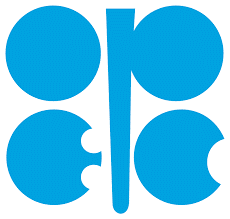It's a bit after 3 a.m. as I'm writing this here in Abu Dhabi. At least I think that's what it is. After 16 hours of flights, across nine time zones, and a down day to recover from arriving in the Persian Gulf sick, it's difficult to tell.
But there's something you need to know...
When I left the United States on Tuesday, Nov. 15, crude oil had just posted its strongest one-day rally of 2016. WTI (West Texas Intermediate, the benchmark crude rate traded in New York) shot up $2.49 or 5.8% for the day. The rise kept gaining speed as some traders had to unwind their short positions.
That's been great news for energy investors, as shares across the oil sector have risen - especially in the case of premium U.S. shale producers.
Of course, this has followed a period of weakening oil prices. Even after Tuesday's monster gain, WTI was up only 1.2% for the week and was still down 8.9% for the month. Now, prices should consolidate over the rest of the week.
But one factor is currently overriding everything else when it comes to the price of oil...
Whether an OPEC oil deal is successfully engineered at the cartel's Nov. 30 meeting in Vienna.
And I need to warn you - there are some bad signs on the horizon for that meeting...
Prices Are Now Dictated by the Chances of an OPEC Oil Deal
 Sure, continuing concerns over the supply-demand balance and over what the presidential election results mean for the energy sector may have contributed.
Sure, continuing concerns over the supply-demand balance and over what the presidential election results mean for the energy sector may have contributed.
But don't be fooled.
The ups and downs in the oil market are primarily about whether markets think OPEC will, or won't, succeed at capping oil production on Nov. 30. Earlier this week, the Russians noted (once again) that they would be on board.
That's crucial, because Russia remains the largest non-OPEC oil producer where national production levels are determined by central authorities and a dominant state-controlled national oil company.
Don't Miss: This is your ticket to bigger and better returns... and it won't cost you a penny. What are you waiting for? Read more...
The American oil patch, in contrast, involves thousands of participants with what is produced, and by whom, being determined by market conditions. That means the United States - where huge extractable reserves of shale and tight oil have catapulted it into a world leader - is not a party to international arrangements.
Simply put, the U.S. does not have a "central" oil minister who speaks on behalf of the government and dictates policy to a "central" oil company. There is no way for the U.S. to negotiate the way OPEC and Russia do.
The value of U.S. currency is still important to the global oil trade because oil contracts are denominated in the dollar. However, with international oil prices determined by demand and events outside of North America and Western Europe, what happens in the U.S. has largely impacted the global oil price only through how much is imported into the country from elsewhere.
Yes, Congress now allows the export of crude oil from the states after a prohibition that lasted over four decades. But it will take some time before U.S. exports will have any impact on the broader market.
That's why it's OPEC's and Russia's ability to work together that is an absolute linchpin in any production cap.
Of course, even that's not always enough...
[mmpazkzone name="in-story" network="9794" site="307044" id="137008" type="4"]
The Status Quo Is Unsustainable
Earlier in April of this year, Moscow signed on to a cap prior to the special meeting held just up the coast from here in Doha, Qatar.
Unfortunately, at the last minute, the Saudis declared they would not agree to a cap unless Iran did so as well. With the Iranians not even present at Doha and declaring they would not limit their production until it had first reached pre-sanction levels, the deal was dead.
Oil Forecast: My (Bold) 2017 Oil Price Forecast - and Today's Most Profitable Energy Play
The Russians were upset to say the least, and after the meeting everybody increased production even further (pushing global oil prices down again). With all OPEC members and the Kremlin dependent on oil revenue for their central budgets, that decision only made worse the financial mess each country is facing.
All of this flows from a November 2014 Saudi-led OPEC decision to defend market share rather than price. Most OPEC members now believe this needs to end. But each one is in a paradoxical position: There is now no reason to keep oil in the ground instead of pumping it. That would just give up market share (and revenue) to a competing country.
This is a classic case of a "zero-sum game" - a game where players gain only by having others lose.
This race to the bottom is clearly unsustainable.
So two months ago, during meetings at the margin of the International Energy Forum in Algiers, another oil production cap was proposed...
The Deal's Main Impact Would Be Psychological
The new deal is set to be finalized at the next regular OPEC meeting in Vienna at the end of this month. It also has the tacit consent of Moscow.
This time around the difference is the likely cap itself. OPEC Secretary General Mohammed Barkindo has said that the cartel is committed to implementing the Algiers accord. This despite two members - Iraq and Iran - still holding out for preferential treatment
Barkindo claims that the cap would end up with OPEC oil output between 32.5 million and 33 million barrels a day. That would still need to be broken up into monthly quotas for each member country, a stumbling block if Baghdad and Tehran disagree. Iraq and Iran producing more would require further cuts in production from other OPEC members.
Another difference is in the impact of the cap. OPEC production hit a record 33.83 million barrels a day in October, about 1 million more than the level which would have been used had the Doha accord from April been implemented.
Global demand has increased in the intervening months, but certainly not anywhere close to making up the difference.
Instead, the impact of the cap would be psychological. By allowing traders to figure in a known ceiling for production, it would allow for the floor of the oil price to improve over time.
But two important matters may still block the deal...
The Saudi Energy Minister Doesn't Seem Confident
First, Saudi Arabian Energy Minister Khalid Al-Falih called a meeting of Persian Gulf and other OPEC oil officials in Doha (to take place as a side-bar at yet another oil conference). They were arriving in the Qatari capital just as Marina and I were leaving it.
Unfortunately, neither Iran nor Iraq - the two main stumbling blocks to any OPEC deal - are scheduled to attend.
Second, Al-Falih has already criticized President-elect Trump for his position on oil imports. On the campaign trail, Trump claimed he would limit oil imports to the United States, preferring instead to rely on domestic production.
Even overlooking the question of whether the U.S. president has that power, this gauntlet being thrown down is telling us something else...
Remember that corollary to Murphy's Law - if a manager condemns somebody for something that hasn't even happened yet, that means they've already decided who to blame if it does happen.
It may well be that Al-Falih is setting the stage to blame Trump if OPEC fails to agree on a production cap in Vienna at the end of the month. It seems everything else is already blamed on America.
But it's not over yet. Stay tuned for more from the Persian Gulf next week...
Energy's $48 Trillion Holy Grail: A shocking discovery has unlocked a 36,000-year supply of free energy. Not only is this fuel source endless, it's ready to use immediately! The U.S. Department of Defense just invested $7 billion in a single day, igniting an early-stage "energy boom" that will likely mint millionaires at a dizzying clip. Find out exactly how to play it here...
Follow Money Morning on Facebook and Twitter.
About the Author
Dr. Kent Moors is an internationally recognized expert in oil and natural gas policy, risk assessment, and emerging market economic development. He serves as an advisor to many U.S. governors and foreign governments. Kent details his latest global travels in his free Oil & Energy Investor e-letter. He makes specific investment recommendations in his newsletter, the Energy Advantage. For more active investors, he issues shorter-term trades in his Energy Inner Circle.



